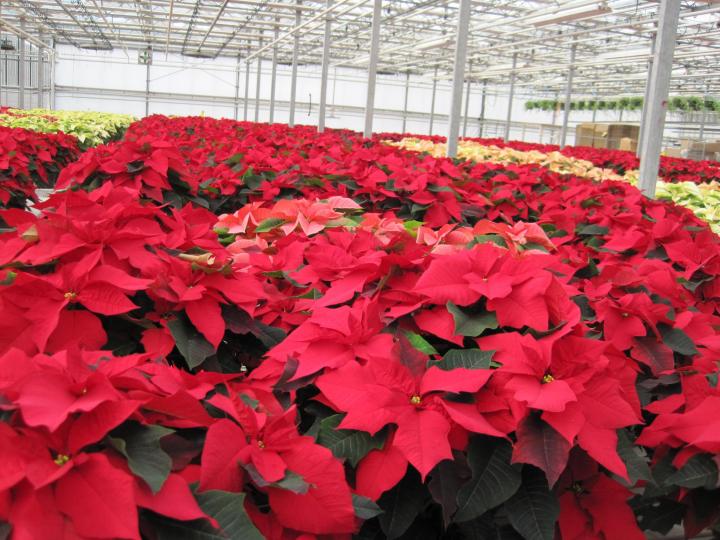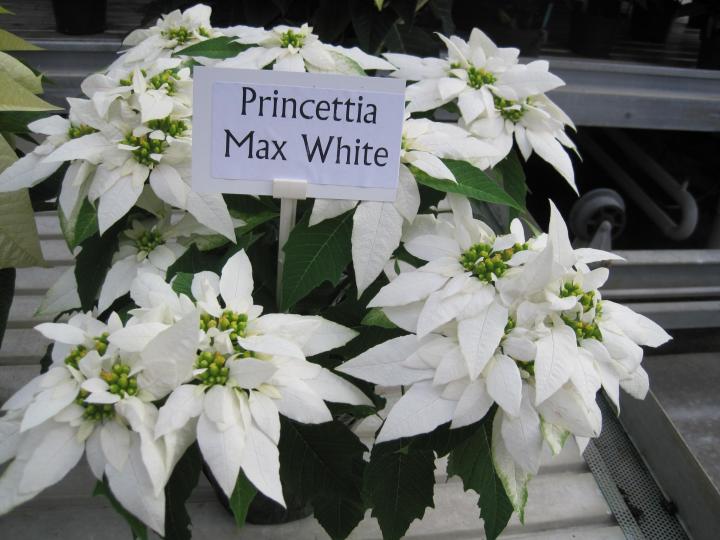





 Dennis Morgan
Dennis Morgan
No plant symbolizes Christmas quite like the poinsettia. More than 2 million of them will be sold this year, making it the largest potted flower crop grown in the US.
Are you surprised that 80% of all poinsettias are purchased by women?
There are over 100 varieties of poinsettias available in shades of red, pink, white,and yellow - solids, streaked, marbled, and multicolored. It makes it hard to pick just one!

Some have even been treated with dyes, painted, or sprayed with glitter!

National Poinsettia Day, December 12, is coming up so I took advantage of an open house at a local wholesale grower’s greenhouse to view the estimated 40,000 plants they have ready to be shipped out to stores in my region.

Imagine acres of poinsettias in all colors and sizes!
The poinsettia is a tropical shrub native to southern Mexico where it grows up to 10 feet tall. The colored “flowers” are actually specialized leaves called brachts, while the true flowers are inconspicuous beads found in the center of the brachts.
Joel Poinsett, the first US ambassador to Mexico, was so impressed by the beauty of these plants that he sent cuttings back to his home in South Carolina in 1828. Soon the plants became popular across the US and were named for him. For over 150 years December 12 was considered National Poinsettia Day to honor the day of Poinsett’s death in 1851. In 2002 an Act of Congress made it official.
Let’s lay to rest the myth that poinsettias are poisonous. Years ago researchers at Ohio State University fed huge quantities of poinsettia parts to rats with no ill effects. To replicate their test, a 50 pound child would have to eat 500 leaves. POISINDEX, a primary resource used by poison control centers, lists occasional vomiting as a side effect of eating the leaves. People with latex allergies can be sensitive to the milky sap and should be careful when handling the plants to avoid a rash. The USDA reports that it has no evidence of anyone dying from eating poinsettias. Holly and mistletoe are much more toxic to children and pets.
To get off to a good start, protect your new plant from cold temps and chilling winds on the way home from the store. This is a tropical plant so don’t leave it in a cold car while you run other errands.
At home place it near a sunny window where it will get bright, indirect light for at least 6 hours a day. Keep it out of direct sun though, which could fade the leaves. Avoid drafts, keeping temperatures between 65-70 degrees. Overwatering is a common cause of death so water when dry and don’t let the plant sit in water. No fertilizer needed while the plant is in bloom.

Brighten your home this holiday season with America’s favorite Christmas plant! For more information about poinsettias and Poinsettia Day visit their official website www.poinsettiaday.com.
~ By Robin SweetserGet inspired by Robin Sweetser's backyard gardening tips. Robin has been a contributor to The Old Farmer's Almanac and the All-Seasons Garden Guide for many years. She and her partner Tom have a small greenhouse business and also sell plants, cut flowers, and vegetables at their local Farmer's Market.
Copyright © www.100flowers.win Botanic Garden All Rights Reserved